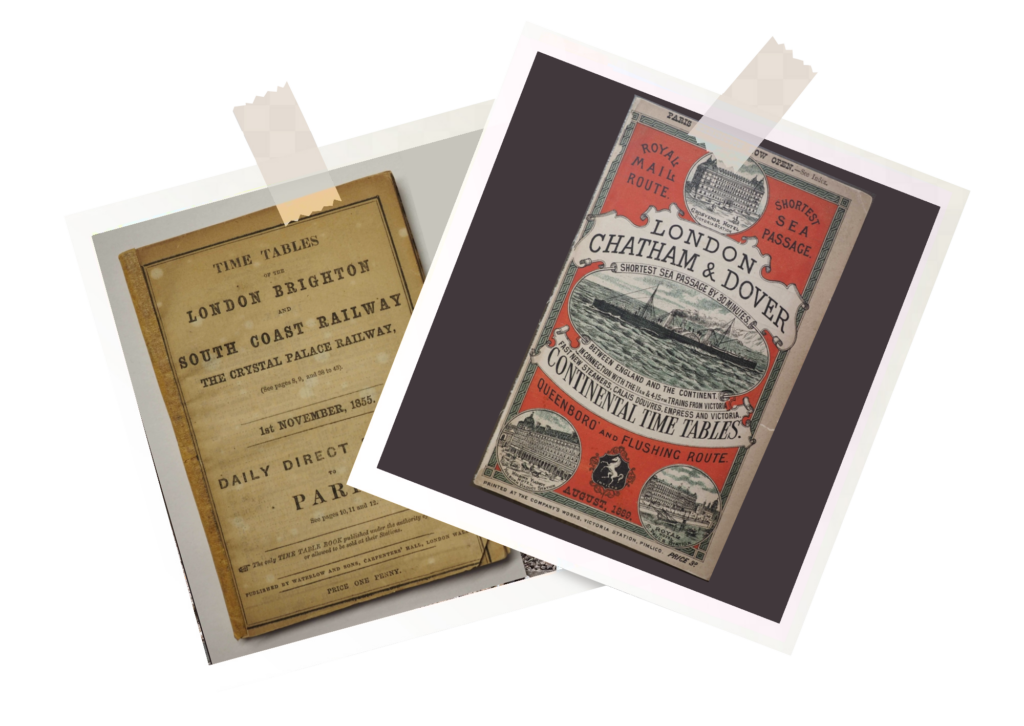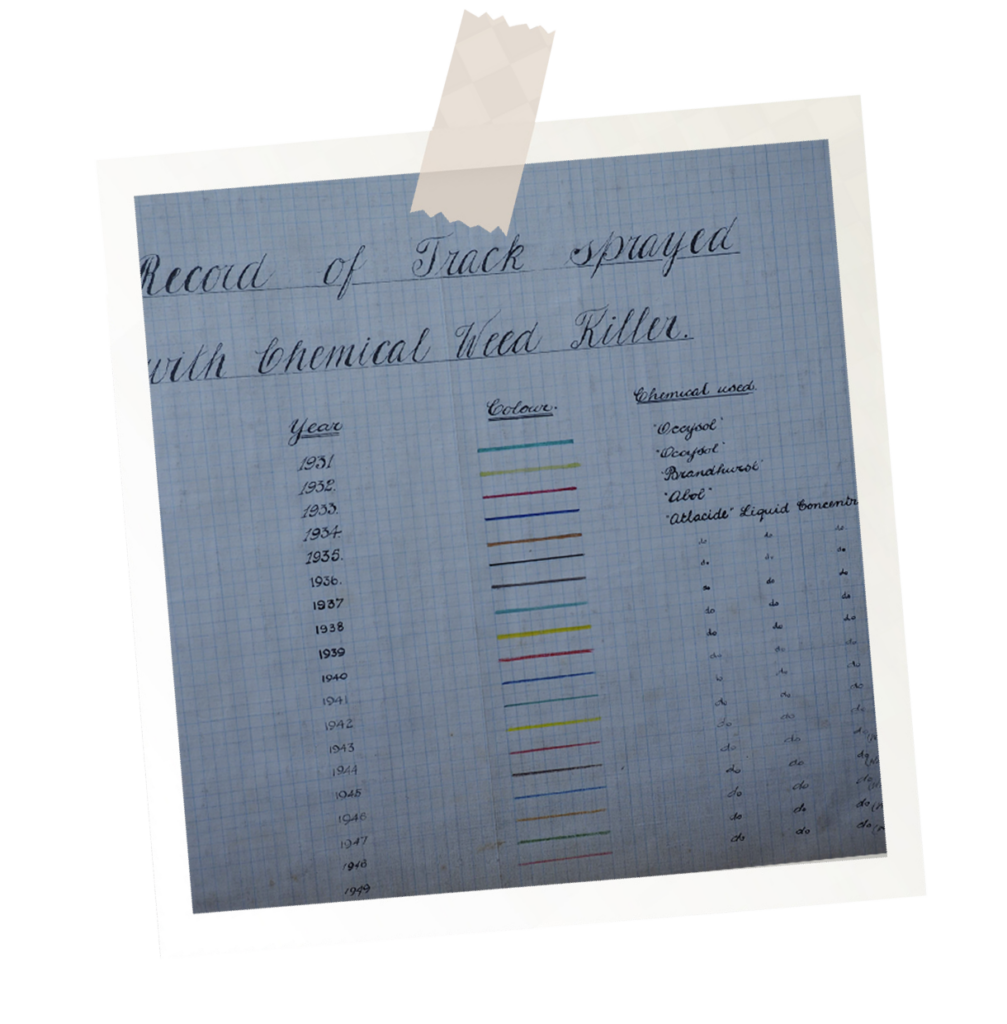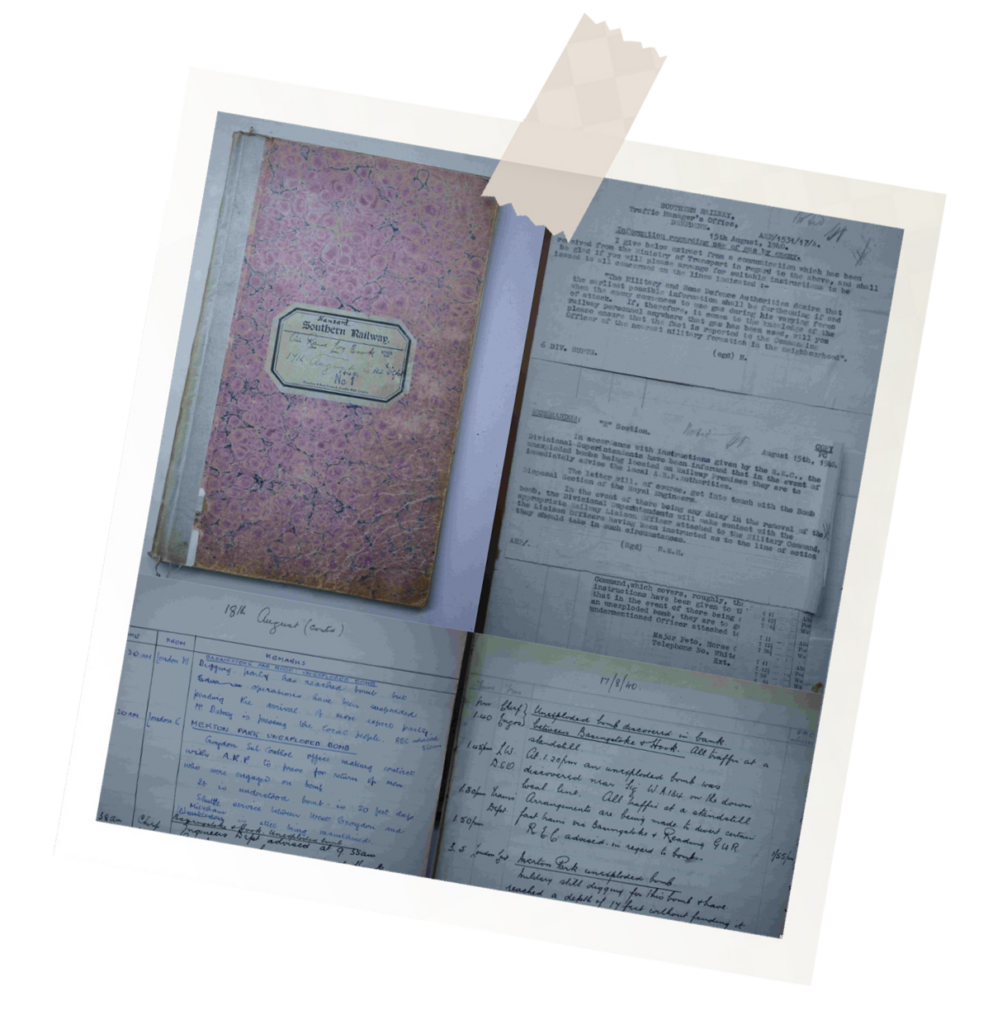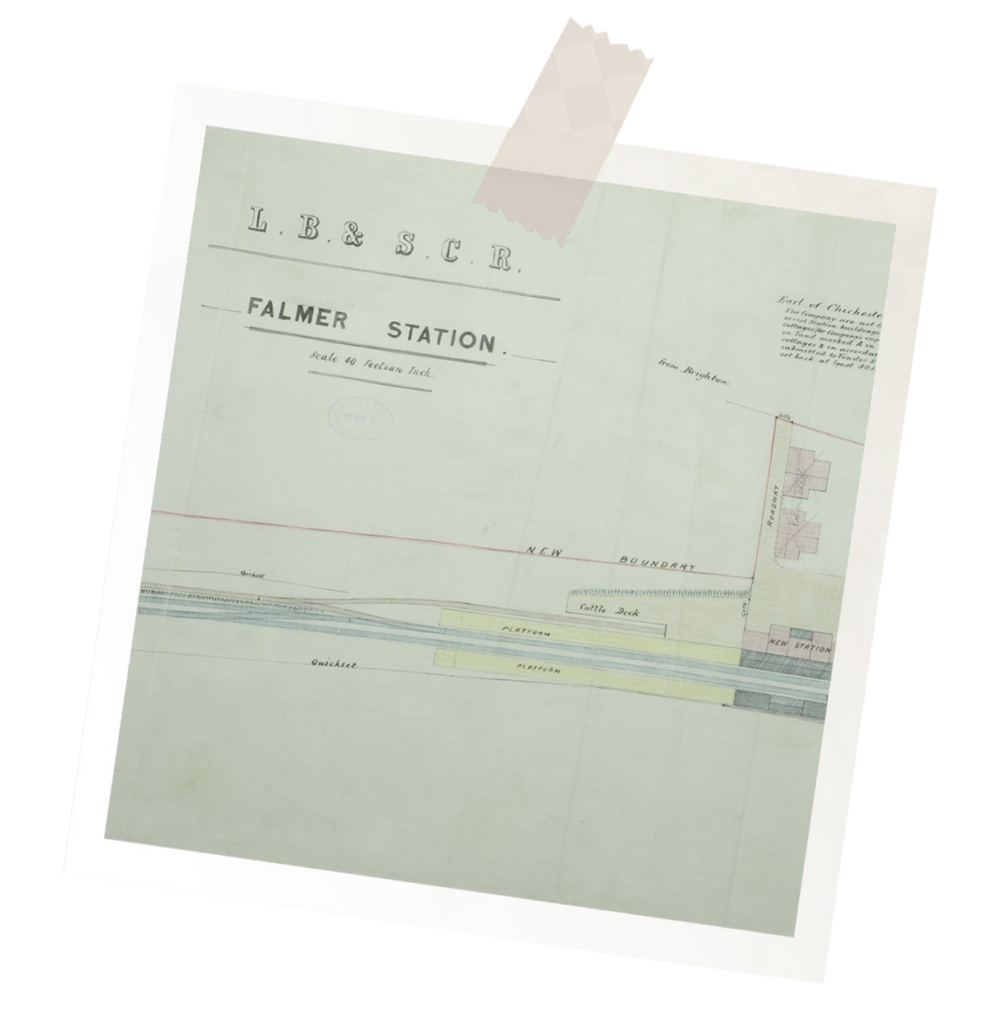

Bluebell Railway’s Impressive Archive
The Bluebell Railway Archive holds an impressive assortment of manuscripts, records, photographs, maps and printed books covering the history of railways in Southern England from the early 19th century to the present day. The collection is currently held in a building near Dorking, Surrey and is available for viewing by appointment.

Extensive railway archive - 150,000 photos & 15,000 documents
The Archive contains in excess of 150,000 photographs and 15,000 documents including personal memoires, correspondence, signal box diagrams, public and working timetables, special traffic notices, locomotive and carriage drawings and an ever expanding library of books and articles.
We hold thousands of public and working timetables in our collection. They date from the dawn of the first railways right up to the present day. Also, we have a collection of 2500 2.5 inch OS maps covering Kent to Cornwall at various dates in the last century.



Terrier
“Land in Pokesdown purchased for ninety five pounds, six shillings and threepence.”
The collection includes documents relating to the building of the railways. Among them is this “Terrier” which covers the construction of the LSWR line through Bournemouth in the late 1880s. Its beautifully drawn maps chart the course of the new railway, whilst the handwritten notes provide details of the purchase of each piece of land used.
Along with Parliamentary and legal costs, the price of land was often one of the most significant factors involved in building new lines. In some cases, land was purchased at many times its true value. Documents like this help us to understand why railway building in Great Britain was often so expensive.

Driver Notes
“Driving hundreds of miles every week in the 1870s.”
Among the many personal diaries and journals that we hold is a collection of four fragile but incredibly well preserved driver log books. Written by a Brighton based driver, K. Harland, who worked for the London Brighton and South Coast Railway they cover the period 1869 – 1876. They provide us with a detailed record of his duties, the destinations, locomotives etc and the daily mileage driven.
The pay, conditions and hours of work of all railway workers, including drivers, changed considerably over the course of the nineteenth century. Log books like these not only give us an insight into those changes but also a real sense of what it must have been like to have worked on an open footplate with virtually no protection from the elements.



Timetables
“Train times changing with the tides.”
Seen here are two timetables which both relate to cross-channel services. The older one is from 1855 and provides information on services between London and Paris via the Newhaven and Dieppe route. It shows us that the times of the connecting trains changed each day according to the tidal conditions at Newhaven.
The other timetable dates from 1889 and was produced by the London, Chatham and Dover Railway (LCDR). It also covers services from London to Paris, but via the Dover and Calais route. On the cover, the LCDR boasts that it has the shortest sea passage and is the designated Royal Mail carrier. This is aimed at differentiating its service from that of its two main rivals: the LBSCR via Newhaven and the South Eastern Railway (SER) via Folkestone.
As the railways developed in the period up to the First World War, rivalry between them became more intense. Documents like these timetables provide us with an insight into how railways used the scheduling of their services to compete with one another, and how the methods they used to win business developed over time.

Surveying and Spraying
“Counting employees and spraying Occysol on the track”
Many of the documents we hold relate to the Southern Railway (1923-1947). They include a 1931 Census Survey which lists every staff position at every station, office and depot on the system. Hundreds of meticulously typed pages provide us with the detail of how many people worked at each location, as well as information on their sections and their grades. We can learn, for example, that in 1931 as well as 9,733 footplate staff working for the company there were also 4,118 staff involved in shipping within the Docks and Marine department.
One of the more intriguing Southern Railway items in our collection is this record of tracks covered by chemical weedkiller. Largely hand drawn, it documents the situation on the Southern Division between 1931 and 1949. Numbers on a map correspond to individual pages in the ledger and each page represents a section of track. The various chemicals that were used to treat the line are shown in coloured pencil.
The years from 1923 to 1939 were not easy ones for the railway industry in Britain. Even in relatively buoyant southern England the Southern Railway often struggled financially. Documents like these give us a better understanding of the extensive costs involved in running a railway at the time.



Air Raid Logbook
“Making tea after the “all clear” has sounded.”
We have many items in the collection relating to the First World War and the Second World War. They include diaries of women recruited onto the railways to replace men who had joined the armed services, pamphlets with instructions on carrying explosives by freight train and special traffic notices to be used if an evacuation of the whole population away from the coast had ever been needed.
This log book is a first-hand account of the impact of the Blitz on the Southern Railway. Containing largely handwritten notes and covering the year 1940, it documents the damage done by the bombing as well as the efforts to deal with unexploded devices and clear the line for traffic. It enables us to understand what it might have been like to have worked in a busy railway facility under attack from the air.
In both wars the railways had to accommodate a massive influx of traffic and try to carry on in very difficult circumstances. Documents like this can tell us a lot about their level of preparedness and their effectiveness.

Maps and Plans
“Falmer Station and the Earl of Chichester”
We also have a vast collection of maps and plans covering much of the London Brighton and South Coast Railway and beyond. Here we see a plan of Falmer station near Brighton. It is one of a series of London, Brighton and South Coast Railway plans we hold from 1891.
Note that:- “The Company are not to erect any buildings except Stations Buildings & Offices and except four Cottages (for Company employees) which may be erected on land marked ‘A’…. ”
The Earl of Chichester would be Walter Pelham, the 4th Earl (1838 – 1902), a British Liberal politician. His residence was at Stanmer House just North West of the station.
The original station was approximately 53 chains (1 km) east of this plan, and opened on 8 June 1846. It was moved to its present location, much closer to the village, on 1 August 1865, and rebuilt in 1890.The buildings on the down (eastbound) platform date from this time, but modern replacements have been installed on the westbound side.


